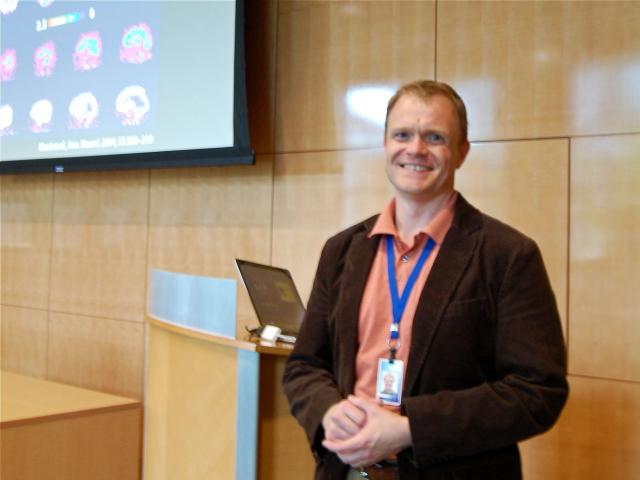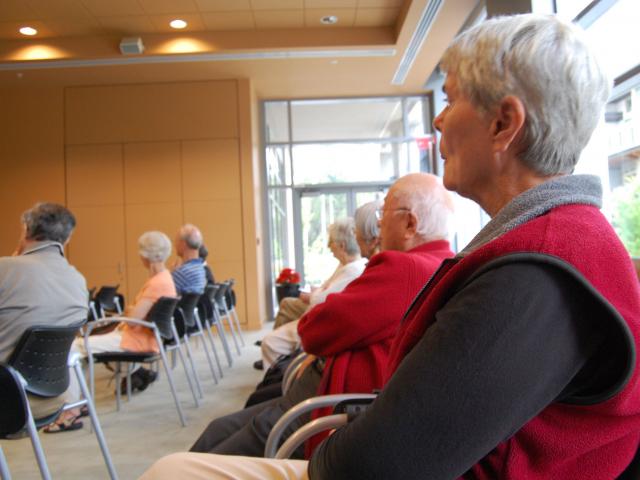It was an afternoon of discovery at Tapestry Village this past Tuesday, as the residents welcomed TRIUMF’s Dr. Colin Morton to hear his talk “Radiation and Medical Isotopes.” The talk touched on topics in the news, such as the medical use of isotopes, but also on more abstract concepts, including isotope production. The relevance of isotopes became apparent soon after the start of Dr. Morton’s talk - “It’s interesting to learn about the actual results of isotope use,” commented one of the attendees, Joan McLeod. The applications are varied, ranging from heart-attack diagnosis and evaluation of treatment to looking for tumours in bones or in internal organs. Isotopes can also be used to treat thyroid cancer with the help of radioactive iodine, an element that accumulates specifically in the thyroid and can thus selectively target a cancerous growth. Positron Emission Tomography (PET) is one of the common techniques for using isotopes for imaging; it is increasinly being used to study how Alzheimer’s and Parkinson’s affect brain activity. Dr. Morton smoothly advanced the lecture towards more complex topics as his presentation turned to isotope production. About 80% of medical applications use Technetium-99m (Tc-99m), which is a decay product of Molybdenum-99 (Mo-99). Mo-99 has a sufficient half-life to make it transportable. Currently, most isotopes are produced with the use of nuclear reactors, which deliver enough energy and enough flux to trigger the reactions that produce the desired isotopes. While this has been effective in the past, many of the reactors employed in production are becoming more susceptible to unexpected shutdowns due to their age. This creates the potential for worldwide isotope shortages, as was the case when Canada's Chalk River reactor had to undergo unplanned maintenance.
The really exciting part of the lecture came next as Dr. Morton began to explore alternate means of producing isotopes. Electron accelerators (such as one proposed at the Canadian Light Source in Saskatoon) can use gamma rays to bombard Molybdenum-100 (Mo-100) to create Mo-99, which decays into the desired Tc-99m. This technique is beneficial as there is more control over the particle used. Here at TRIUMF, we can produce Tc-99 by bombarding a Mo-100 target with a proton beam from existing cyclotrons, eliminating the need for the intermediate Mo-99. As technology advances, this technique is bound to become only more reliable in the future. The talk was quite effective, spawning a number of questions and side discussions. After the talk, Joan, who also participated in a tour of TRIUMF said, "The more I hear, the more it sticks" – a pleasant reminder that the work here at TRIUMF does not fall on deaf ears. --By Lena Sitnikova, Outreach Assistant |
Dr. Colin Morton at the helm of his lecture, "Radiation and Medical Isotopes" | |
Attentive audience at Tapestry Village |
Canada's particle accelerator centre
Centre canadien d'accélération des particules
Centre canadien d'accélération des particules


